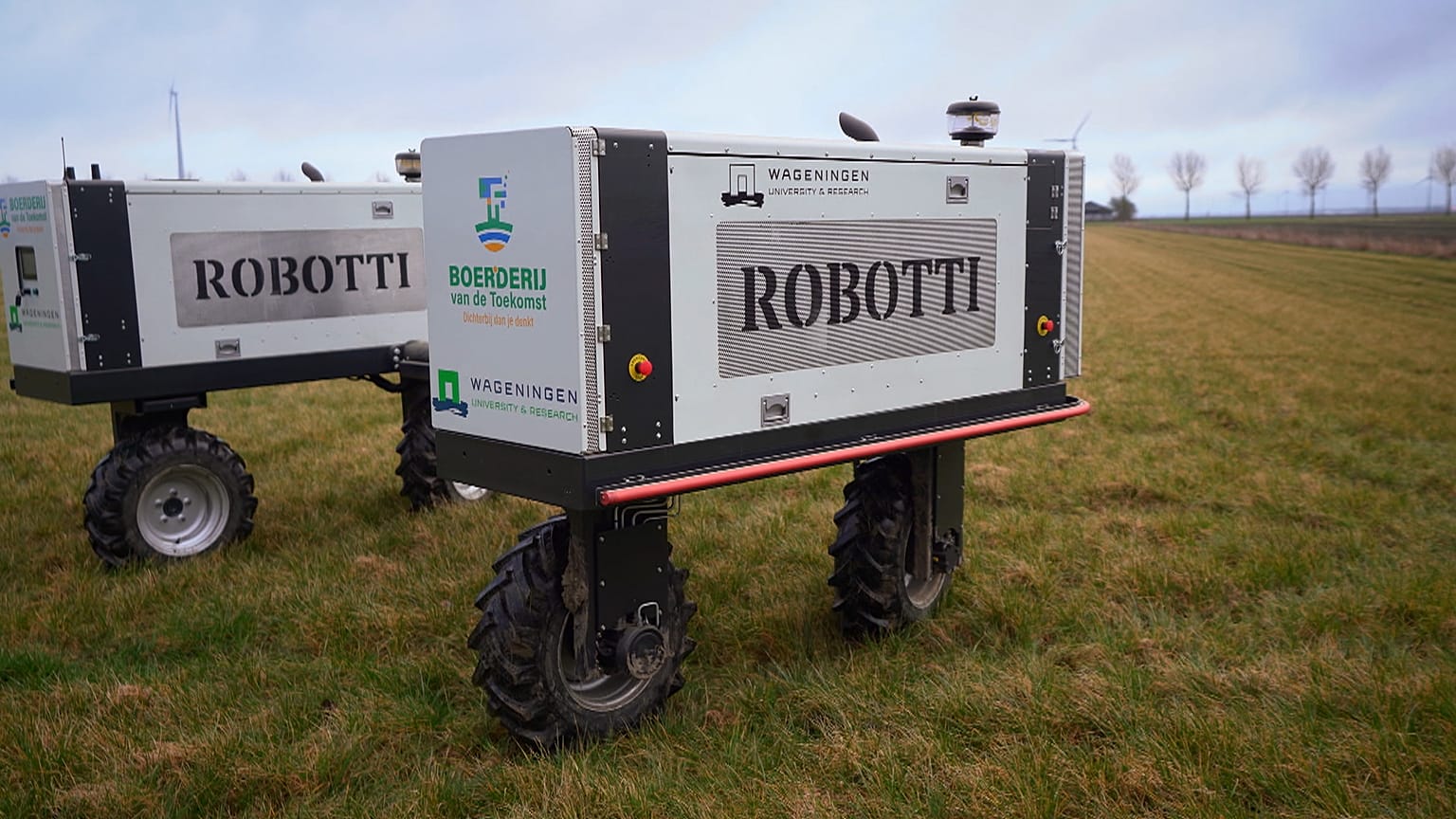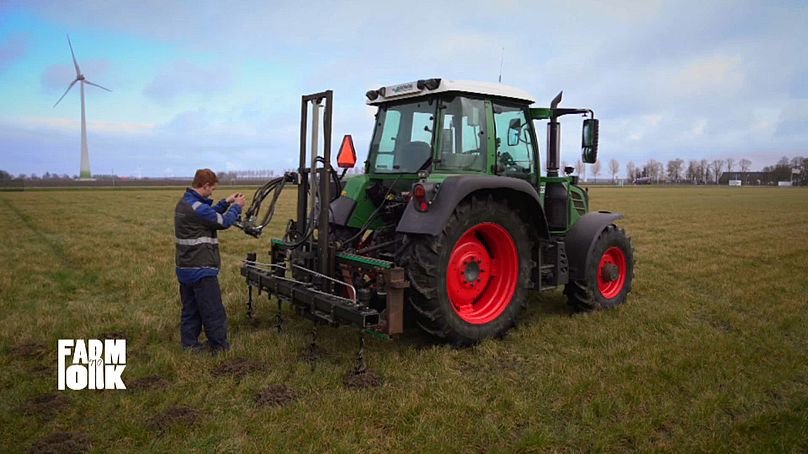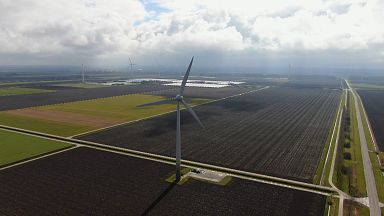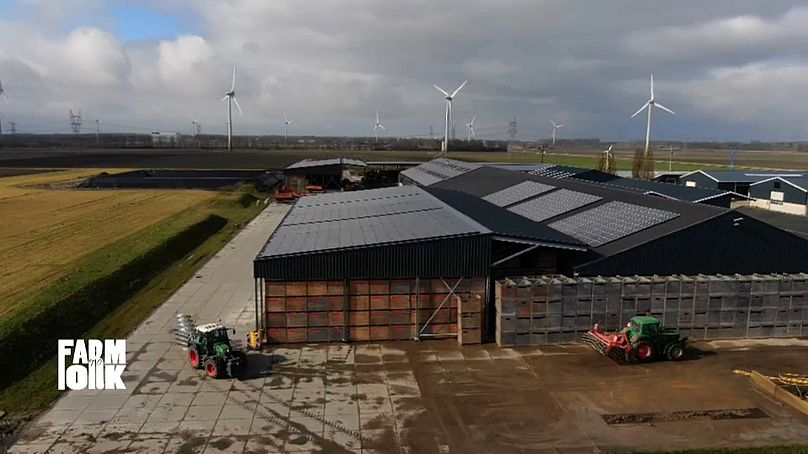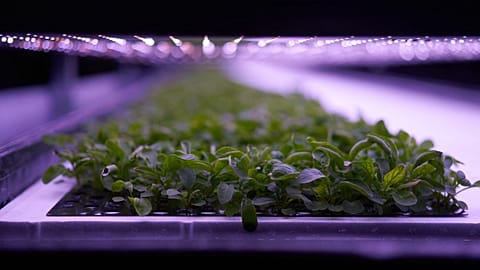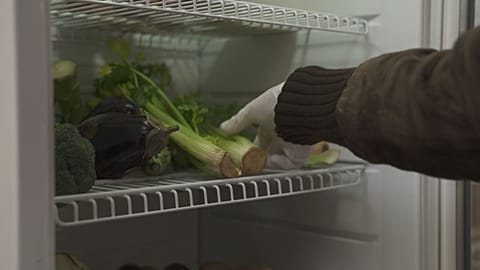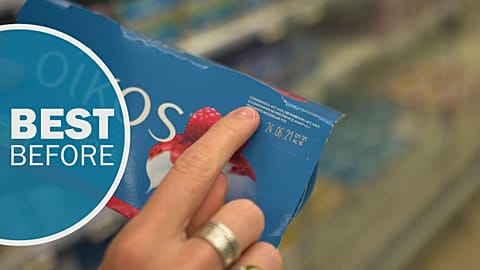Farm of the Future is a project in partnership with the EU Commission's 'Farm to Fork' strategy. It uses the latest technology and innovations to produce sustainable agriculture for a healthier planet.
How can European agriculture become more eco-friendly and guarantee a healthy, profitable production?
The answer lies in innovative production methods and cutting-edge technology, the likes of which are being used at the Farm of the Future in the Netherlands. Researchers from the Wageningen University developed this farm to provide solutions for sustainable production. They say that their farming, put to the test in Lelystad, can be described as closed-loop recycling, high levels of biodiversity, minimal environmentally harmful emissions. They're also looking to assure sufficient incomes for farmers and eventually not use fossil fuels.
The farm has two field labs, one especifically for testing agroecology and technology. It also has a place where the national centre for applied research on renewable energy and green resources (ACRRES) can run projects on renewable energy. Farm of the Future is in partnership with the EU-funded project Nefertiti, which aims to boost the use of innovation in agriculture and contribute to a more competitive, sustainable and climate-smart future.
Wijnand Sukkel is a project manager for the farm. He says that they use a combination of agroecology and technology with a particular focus on soil management. "We have a focus on crop diversity, not only crop diversity in time, like rotation, but also crop diversity in space, and that’s mixed cropping, strip cropping", he adds.
Monoculture vs strip culture
Strips of different crops, unlike monoculture fields, create mini-ecosystems that benefit biodiversity. Crop rotation and cover crops improve soil quality. A challenge to soil quality is subsoil being compacted by heavy machinery. Subsoil is the earth just underneath topsoil that sits at a depth of around 30-45 centimetres. It is essential for subsoil to be lose, as plant roots can easily penetrate it and it increases the land's natural drainage of surplus water.
A solution to counteract compact subsoil is being tested at Farm of the Future. Drilling vertical holes deep into the ground breaks up the solid layers.
Blossoming tech
Robots are key to modern agriculture. They fit nicely with the methods of sustainable production and provide useful data. Bram Veldhuisen is a researcher at Wageningen University. He tells us that "machines often got bigger and bigger and now with the robots we see that they also can be smaller and that's better for the soil". "Sensors, like satellites and drones, give much more insights in things in the fields", he adds.
To make these kinds of technologies accessible to all, the internet is indispensable. That's why the European Commission’s ‘Farm to Fork’ strategy is aiming to get fast broadband internet to 100% of all rural areas by 2025.
Scientific and natural farming complete new agricultural methods. One such natural method is cover crops. They are planted during the winter and are used to make the soil healthy. These plants take up minerals through their roots, forming proteins and organic forms of nitrogen that protect and improve the earth.
Nitrogen is crucial to life, but if there is too much of it in the soil due to the overuse of fertilisers, it can harm the environment.
Lab tests are done before sowing and after harvest to check the balance of the soil. Koen Klompe, an organic farmer and researcher, tells us that at Farm of the Future "we always take some soil samples to see how much nitrogen is still left in the soil after the winter, so we can optimise fertilising. So if there is still a lot of nitrogen in there, then we have to fertilise less nitrogen".
Goodbye fossil fuels
Researchers at the Farm of the Future are producing renewable energy for their machines. They have already kitted out the farmhouses and barns with solar panels that are producing electricity.
An upcoming project is also looking to harness the potential of wind turbines to power a hydrogen-fuel production plant. Sukkel tells us that "from the electricity, we produce hydrogen gas, we store it here and we use it for our tractors". The small machinery uses electricity.
Being able to do this is helping them to be self-sufficient in fuel, a goal for every farm of the future.














